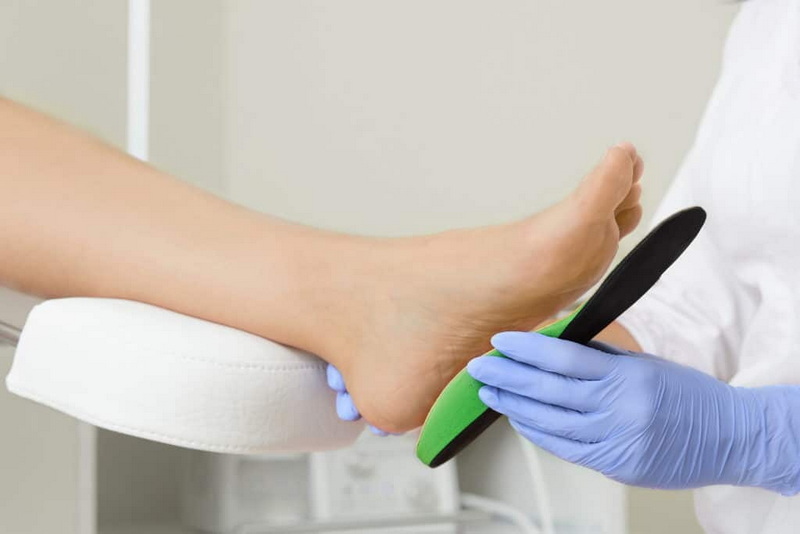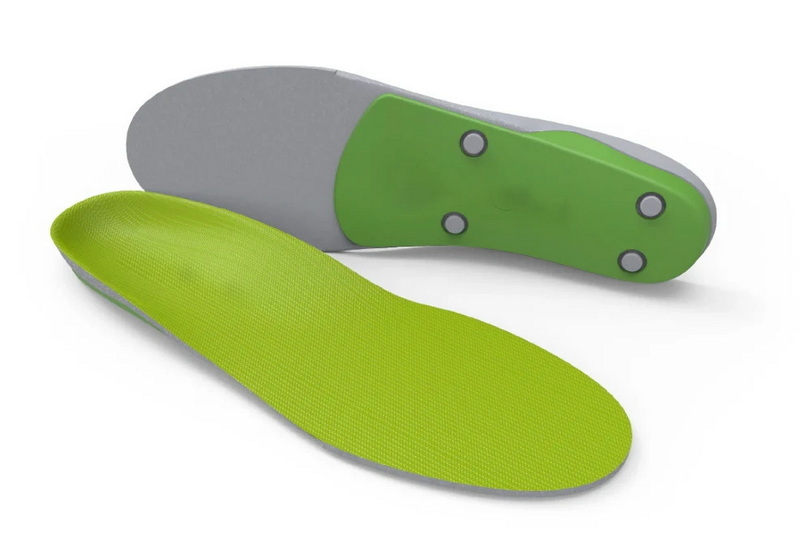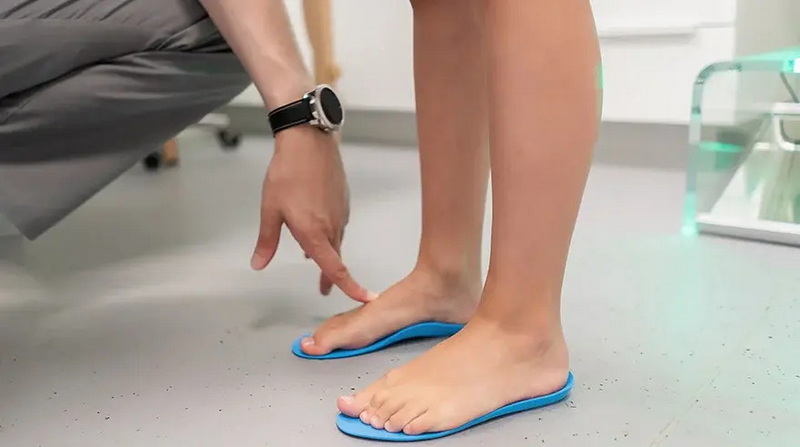Views: 222 Author: Edvo Publish Time: 2025-11-15 Origin: Site











Content Menu
● What Are Orthotic Shoe Inserts?
● Who Benefits from Orthotic Shoe Inserts?
● Types of Orthotic Shoe Inserts
● Medicare Coverage for Orthotic Shoe Inserts
● How to Qualify for Medicare Coverage
● Differences Between Custom and Prefabricated Orthotic Inserts
● The Process for Filing a Claim
● Maximizing Your Medicare Benefits
● How to Choose the Right Orthotic Shoe Insert
● Myths and Misconceptions About Medicare and Orthotics
● Additional Support and Resources
● Frequently Asked Questions (FAQ)
>> 1. Are orthotic shoe inserts covered if I don't have diabetes?
>> 2. Is a doctor's prescription required for Medicare to pay for orthotic inserts?
>> 3. Which type of orthotic inserts does Medicare cover?
>> 4. How much will I need to pay if my inserts are covered by Medicare?
>> 5. Can I file a claim for over-the-counter shoe inserts?
Orthotic shoe inserts are essential medical devices designed to alleviate foot pain, correct gait abnormalities, prevent injuries, and improve mobility. For millions of seniors and individuals with chronic conditions, these inserts often make a remarkable difference in their daily comfort and health outcomes. One of the most common questions among older adults is: are orthotic shoe inserts covered by Medicare? This comprehensive guide explores Medicare's policy on orthotic shoe inserts, details the health benefits of orthotics, clarifies the qualification process, and gives practical tips for maximizing your coverage.

Orthotic shoe inserts are specialized medical devices worn inside shoes to adjust foot alignment, distribute pressure, and provide targeted support. They come in two main categories: custom-made orthotics, tailored for a patient's foot shape and medical needs, and prefabricated inserts, which provide generic support for common issues. These shoe inserts are prescribed for an array of conditions, including plantar fasciitis, flat feet, high arches, bunions, diabetic foot ulcers, arthritis, and recovery from sports injuries.
Usually made from various materials—ranging from soft foam and gel to rigid plastic or carbon fiber—orthotic inserts serve different levels of support and cushioning. While soft inserts prioritize comfort, rigid ones provide stability and alignment correction. Modern designs may combine elements for multi-purpose use: cushioning shock, managing pronation or supination, and protecting sensitive foot tissue.
Orthotics not only relieve foot pain but also have far-reaching effects on overall biomechanics. Adjustments at the foot level can help improve posture, reduce knee and back discomfort, and prevent injury in athletes and individuals whose work requires long hours of standing or walking.
Orthotic shoe inserts significantly benefit various groups, especially those susceptible to foot and lower limb problems. Seniors experience age-related changes in bone density, tendon flexibility, and arch support. Medical studies demonstrate that seniors using orthotic inserts experience better balance and a reduced risk of falls.
Athletes use orthotics as preventive care and for injury management. These devices help minimize the risk of stress fractures, plantar fasciitis, shin splints, and ankle sprains. The correct support diminishes fatigue and enhances performance during high-impact activities.
People with diabetes are among those who benefit most. Diabetic neuropathy often leads to reduced sensation in the feet, resulting in a higher risk of unnoticed wounds and ulcers. Orthotic inserts specifically designed for diabetics provide cushioning, offloading pressure points, and contributing to ulcer prevention and wound healing.
Workers in retail, healthcare, manufacturing, and hospitality who spend prolonged hours on their feet also reap considerable rewards. Well-fitted inserts improve comfort, preserve joint health, and reduce the likelihood of soft tissue injuries caused by repetitive stress.
Orthotic shoe inserts can be further divided into two functional classes: accommodative and functional orthotics.
Accommodative orthotics are generally made from soft, flexible materials. Their main role is to provide extra support and cushioning for tender, sensitive foot tissues. Patients with diabetes or severe arthritis frequently need accommodative orthotics due to fragile skin and altered pressure distribution.
Functional orthotics are constructed with firmer, more supportive materials. These control abnormal ingait movement and help realign the foot, often benefiting people with flat feet, overpronation, or supination problems.
In addition, orthotics are categorized by their intended use:
- Dress orthotics: Slim, low-profile, made for use in formal footwear.
- Athletic orthotics: More robust, focused on shock absorption and preventing injuries in sports.
- Occupational orthotics: Designed for safety boots or work shoes to offer all-day support.
Modern orthotics also account for footwear variety, ensuring patients receive inserts compatible with their daily shoes.
Medicare is a United States federal insurance program primarily serving individuals aged 65 or older, but also covering certain younger individuals with disabilities. The program consists of several parts:
- Part A: Covers hospital care, skilled nursing facility stays, and some home care.
- Part B: Covers outpatient medical care, durable medical equipment (DME), doctors' services, and preventive healthcare.
- Part C (Medicare Advantage): Offers bundled private insurance plans, often with additional benefits.
- Part D: Focuses on prescription medication coverage.
Understanding distinct Medicare parts is essential because eligibility for coverage of orthotic inserts depends heavily on the benefit segment involved and the specific medical context.
When it comes to orthotic devices, Medicare coverage is precise and eligibility rules are tightly defined.
Routine foot care—such as regular trimming of corns or calluses, and purchase of generic shoe inserts—is not typically covered by Original Medicare (Parts A and B). However, exceptions exist for people who have medical conditions, especially those that pose a risk of severe foot complications (most notably, diabetes).
Medicare Part B will help pay for certain foot care and devices when medically necessary. Custom-made orthotics are generally not covered unless supplied as part of a brace. Over-the-counter insoles are almost never covered.
Therapeutic shoes and inserts for diabetes represent a major exception. Medicare covers one pair of depth-inlay shoes and three pairs of inserts per year for people with diabetes and at least one qualifying condition, such as a history of foot ulcers, callus formation, foot deformity, or poor circulation. A healthcare provider must certify the medical need for these diabetic supplies.
Medicare Advantage (Part C) plans may offer broader or different coverage, depending on the private insurer and specific plan provisions. It's important to consult your plan details or speak with your plan administrator to clarify coverage for orthotic devices.
The process for securing Medicare coverage for orthotic shoe inserts involves several steps and specific documentation:
1. Confirm a qualifying diagnosis. The most common covered diagnosis is diabetes with associated foot complications. Your medical record must clearly establish why therapeutic shoes or inserts are medically necessary.
2. Obtain a physician's prescription. The prescription must state the specific need for therapeutic shoes or inserts and confirm the underlying medical condition. Only certain medical providers—such as medical doctors (MDs), doctors of osteopathy (DOs), or podiatrists—can authorize these prescriptions.
3. Visit a Medicare-approved supplier. Medicare will only reimburse claims if both the provider and the supplier (e.g., the shoe fitter, orthotist, or medical supply company) are enrolled in the Medicare system.
4. Proper fit and follow-up. The footwear and inserts must be properly fitted and periodically evaluated by the prescribing healthcare provider to ensure they address the patient's condition.
5. Retain relevant documents. Documentation, including a physician's order, clinical notes, and a copy of your Medicare card, should be maintained throughout the process.
Proper adherence to these protocols is critical for satisfactory coverage, reducing the chance of denied claims or uncovered expenses.
Even with Medicare approval, you will have some out-of-pocket costs:
- You are responsible for the annual Part B deductible, after which Medicare covers 80% of approved charges for eligible medical devices. The patient pays the remaining 20% (coinsurance).
- Not all providers and suppliers accept Medicare “assignment,” which means you may be billed more than the Medicare-approved amount.
- Coverage is typically limited to one pair of depth shoes plus three pairs of inserts per year; exceptions require documented medical necessity and may be rare.
If you have a Medicare Advantage Plan, check your policy for potential differences in cost-sharing, covered items, or provider networks.

Custom orthotics are made individually to fit a patient's foot, based on a mold, scan, or impression. These are generally only covered when supplied as part of a leg brace or when part of therapeutic diabetic footwear. Prescribing custom orthotics for other foot conditions, such as plantar fasciitis or sports injuries, rarely results in Medicare coverage unless significant and qualifying medical factors are present.
Prefabricated, off-the-shelf orthotics are designed to fit a broader population. Medicare regards these as non-essential for most conditions and excludes them from coverage unless specifically prescribed for diabetes-related foot disease by a qualified professional.
When patients need orthotic therapy for non-diabetic foot problems—like bunion pain, flat feet, or heel spurs—they typically pay for these products out of pocket.
After confirming eligibility and receiving a prescription, the following steps ensure a smooth Medicare claim process:
1. Work with a Medicare-enrolled practitioner: Medical documentation should detail the qualifying condition and explain the necessity for specialized footwear or orthotic inserts.
2. Use an accredited supplier: Coverage applies only if the device is purchased from a Medicare-participating supplier.
3. Claims submission: The supplier generally files claims electronically to Medicare on your behalf. If you pay upfront, you may submit a claim yourself, but must include all supporting documentation.
4. Keep receipts and paperwork: Store duplicates of your prescription, billing documents, and any correspondence related to the claim.
By maintaining good records, you have the necessary information ready should Medicare request additional details or if you need to appeal a denial.
Here are some key strategies to fully leverage Medicare's orthotic benefits:
- Review your Medicare Summary Notice (MSN) regularly for details on what has been covered and what charges you might owe.
- If you have Medicaid or a supplemental policy, investigate whether it will bridge gaps in Medicare's orthotic coverage.
- Evaluate Medicare Advantage plans during annual enrollment periods, as these policies sometimes offer broader coverage of podiatric and orthotic services.
- Communicate openly with your healthcare provider and supplier about your coverage, eligibility, and specific medical requirements.
Choosing the correct orthotic insert requires consideration of your specific condition, daily activity levels, and footwear preferences.
- If you have diabetes, prioritize therapeutic inserts designed to relieve pressure points and distribute weight evenly.
- For arthritis and joint pain, select inserts that combine shock absorption with gentle support.
- Active individuals may benefit from gel or foam inserts with reinforced arch and heel support.
- Choose inserts that fit well inside your regular shoes—ill-fitting inserts can cause blisters or worsen discomfort.
- Always follow your doctor's instructions and attend follow-up appointments to monitor your progress.
There are many myths regarding what Medicare will cover for foot health. Contrary to popular belief:
- Medicare will not pay for shoe pads, comfort insoles, or retail “arch supports” unless they are prescribed and supplied for diabetic foot disease.
- Prescriptions from non-enrolled providers or purchases from unaccredited sales channels will not be eligible for reimbursement.
- Custom orthotics for athletes, children, or adults with non-diabetic diagnoses are generally not covered.
- Some people believe multiple pairs of inserts can be reimbursed each year; however, the standard limit is three pairs for those meeting coverage requirements.
- Assuming all Medicare plans cover orthotics identically—always verify specific plan details.
- Skipping critical documentation steps, which can result in claims denials.
- Failing to use enrolled providers and suppliers.
- Not following up on denied claims or missing deadlines for appeals.
Many advocacy groups and medical professional organizations offer resources for individuals navigating Medicare coverage for orthotics and therapeutic footwear. Podiatrists, diabetes educators, and state health assistance agencies provide valuable support in understanding eligibility and managing paperwork.
If in doubt, consult the Medicare.gov website or call their help hotline to clarify questions or find accredited suppliers in your area. Your prescriber can often connect you with the correct resources and guide you step-by-step through the eligibility process.
Orthotic shoe inserts dramatically enhance comfort, prevent injuries, and improve mobility for older adults and people with chronic medical conditions. Medicare only covers specific orthotic inserts and shoes for people with diabetes who meet stringent documentation requirements. Coverage does not extend to most over-the-counter or custom orthotics for non-diabetic issues. To secure reimbursement, it's vital to understand the Medicare process, secure the correct medical prescriptions, choose accredited suppliers, and maintain precise records. If ineligible for Medicare coverage, work with your provider to identify the best out-of-pocket or alternative financial solutions to support your foot health and overall mobility.

Generally, orthotic shoe inserts are not covered by Medicare unless you have diabetes and meet specific medical criteria. Inserts for non-diabetic conditions, comfort, or sports usage are almost always excluded from Medicare Part B coverage.
Yes, Medicare requires both a physician's prescription and certification of medical necessity to cover therapeutic inserts for people with diabetes. The prescription must align with Medicare's qualifying criteria.
Medicare covers therapeutic inserts only for people with diabetes who also have other qualifying foot conditions. Custom or over-the-counter orthotic inserts for other indications are usually not covered.
If covered, you pay the annual Part B deductible, then typically 20% of the approved amount (coinsurance), with Medicare paying the rest. Check with your provider for exact costs, as excess charges may apply.
No, Medicare does not reimburse for over-the-counter inserts, shoe pads, or prefabricated devices meant for comfort, sports, or non-medical reasons.